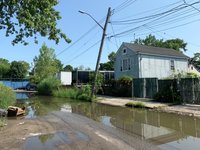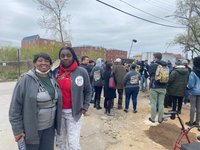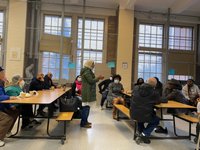The Hole

In the service of environmental justice and in partnership with neighborhood residents, the East New York Community Land Trust (ENYCLT) and Pratt Institute’s Historic Preservation program are conducting a participatory cultural and ecological heritage study of a Brooklyn neighborhood known to many as “The Hole”. This small, low-income BIPOC community is located within Brooklyn’s Jamaica Bay watershed and has an almost rural sense of place, with sparsely developed lots, open fields, and willow trees. But its pastoral features come at significant costs: The Hole lacks stormwater infrastructure and was never connected to the city’s sewer lines. It has for decades been the site of frequent illegal dumping and vehicle abandonment. Residents are exposed to health hazards by regularly flooded streets, unsanitary lots, and home septic-tank overflows.
Over the past thirty years City-led efforts for sewer connection have been stalled by the neighborhood being below the grade of the surrounding street grid which was raised for housing and commercial development. Without the City services millions of New Yorkers take for granted, residents of The Hole have developed their own solutions to their challenges, including planting water-absorbing trees and pumping water into vacant lots that serve as naturally occurring retention areas.

Our research is focused on engaging residents to tell their stories of the past and present and to support them in envisioning a safer and healthier future. Ecological and cultural history is relevant to contemporary residents of The Hole as unearthing invisible ecological heritage is a critical step in addressing the neighborhood’s environmental hazards. Community leaders have been fighting for their neighborhood for over thirty years and now are working with the CLT to implement a nature-based infrastructure plan, affordable housing, and public green space. As part of the planning work we’re documenting the history and significance of this place to the generations of peoples who have inhabited it, and connecting the current community to this heritage through interpretation and sustainability practices.
